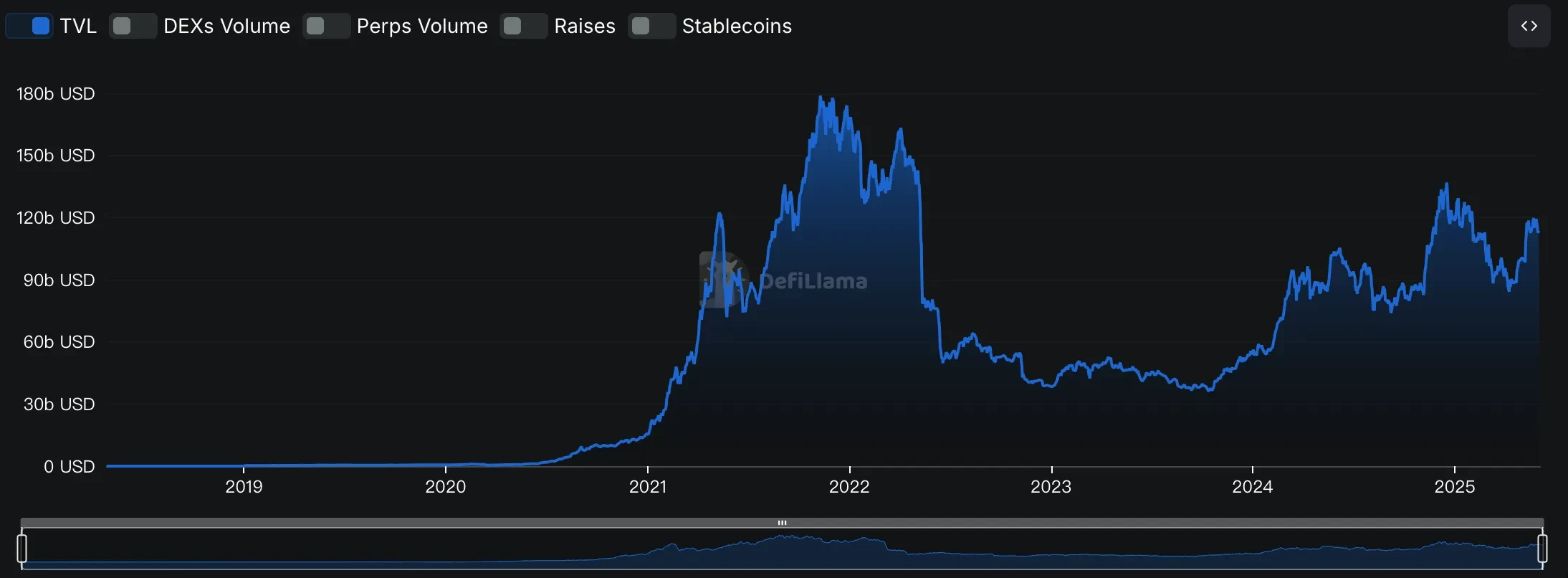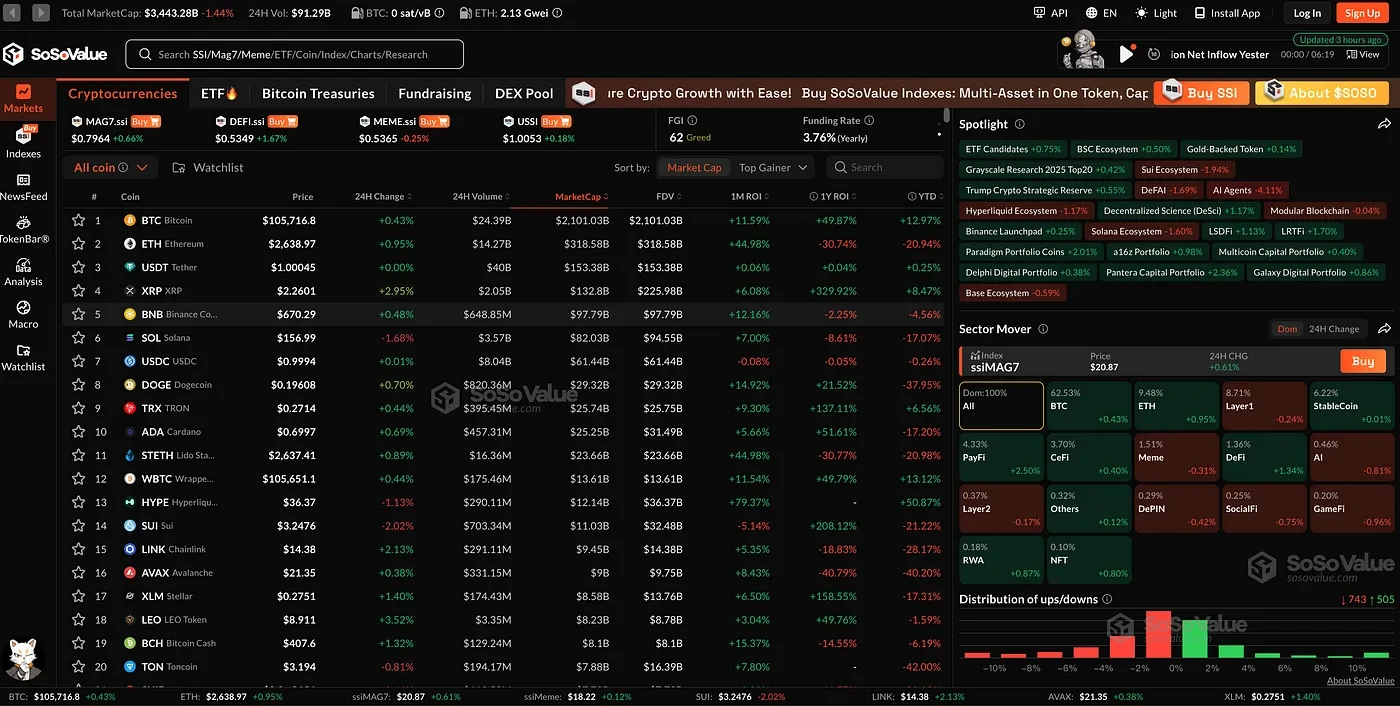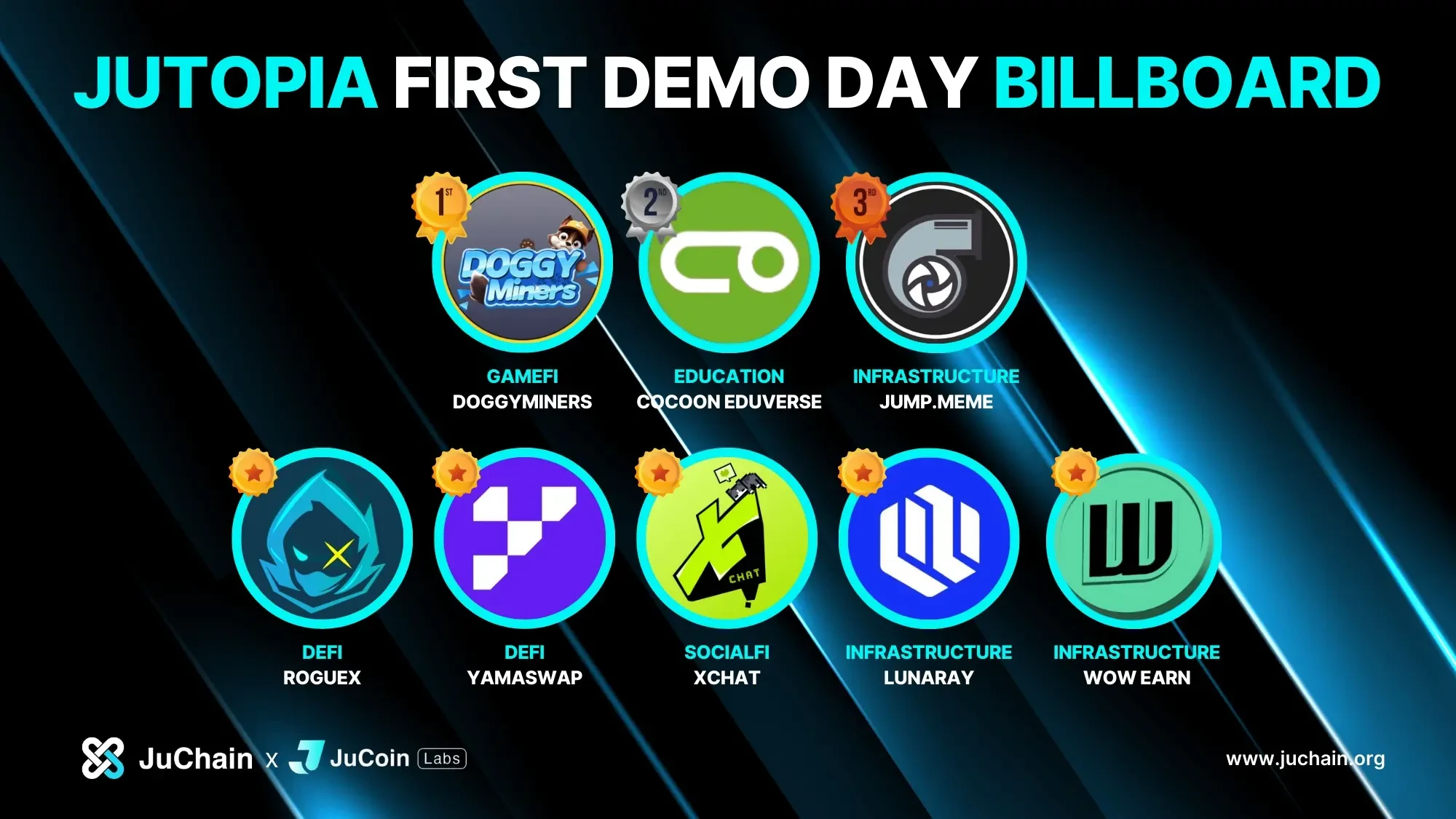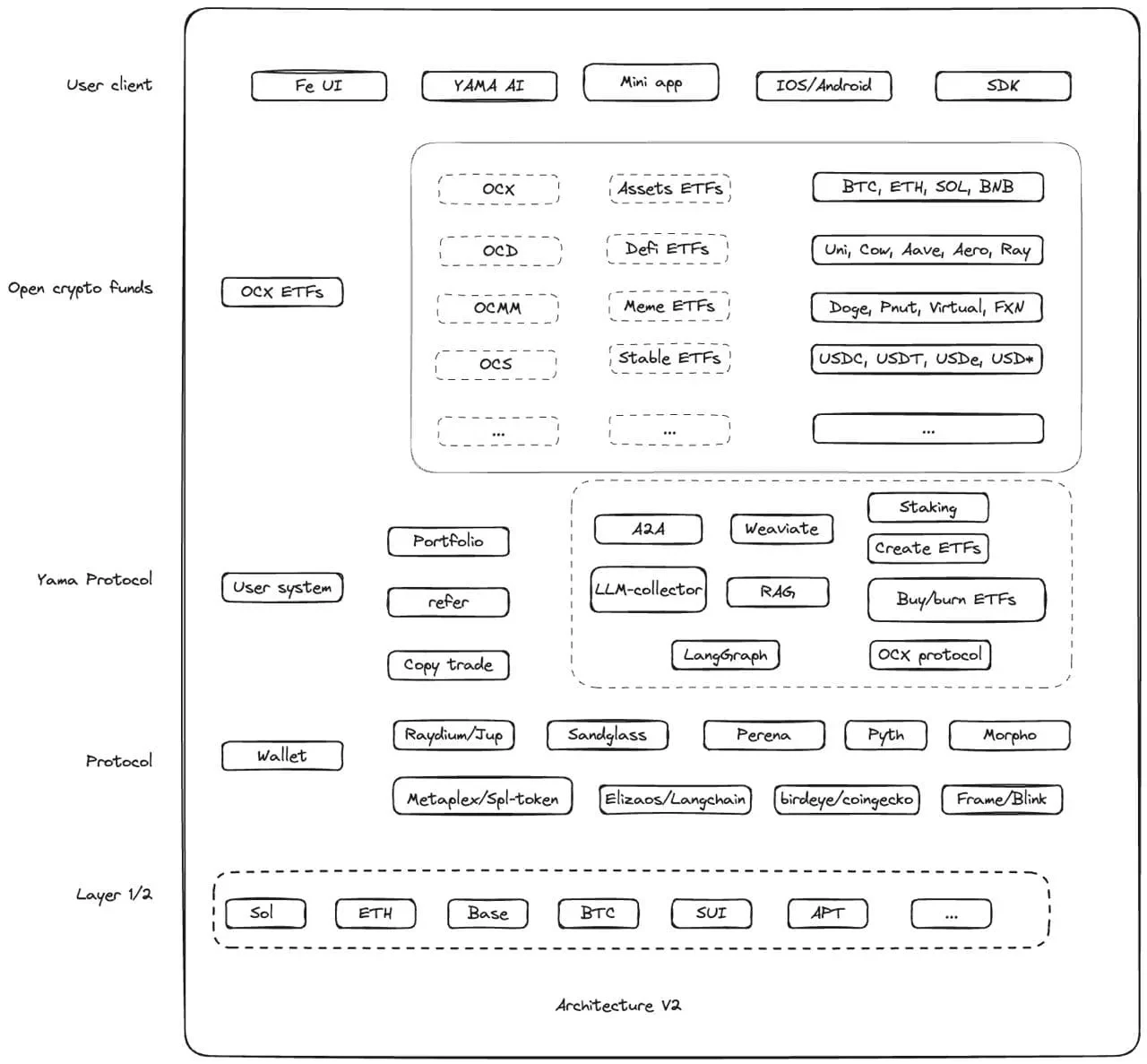Introduction: How Did DeFi Evolve from a Geek's Toy to Wall Street's New Darling?
In recent years, a buzzword has been frequently mentioned in the financial circle—DeFi (Decentralized Finance). A few years ago, when geeks were just starting to build some quirky financial tools on Ethereum, no one expected these "toys" would eventually attract the attention of traditional financial moguls on Wall Street.
Looking back at the period from 2020 to 2021, DeFi surged at an astonishing speed. During that time, the total value locked (TVL) in the entire market skyrocketed from just over a billion dollars to a peak of 178 billion dollars. Protocols with strange names like Uniswap and Aave suddenly became the internet celebrities of the global crypto community.
However, for most ordinary investors, DeFi has always felt like a maze filled with traps. Wallet operations are headache-inducing, smart contracts are as incomprehensible as Martian language, not to mention the constant fear of having assets wiped out by hackers. Data shows that even though DeFi is so popular, the proportion of investment institutions in the traditional financial market that have actually entered the space is less than 5%. On one hand, investors are eager to try; on the other hand, they hesitate to act due to various barriers.
But the capital's sense of smell is always the sharpest. Starting in 2021, a new tool specifically designed to solve the problem of "how to easily invest in DeFi" emerged, which is the Decentralized ETF (DeETF). It combines the concept of ETF products from traditional finance with the transparency of blockchain, retaining the convenience and regulation of traditional funds while also considering the high growth potential of DeFi assets.
One can understand DeETF as a bridge, connecting the "hard-to-enter" new land of DeFi on one end and a vast number of investors familiar with traditional financial products on the other. Traditional institutions can continue to invest using their familiar financial accounts, while blockchain enthusiasts can easily combine their investment strategies as if they were playing a game.
So, how did DeETF gradually emerge alongside the growth of DeFi? What evolution did it undergo, and how did it step by step become a new force in the field of on-chain asset management? Next, we will start from the birth of DeFi and discuss the story behind this new financial species.
Part One: From DeFi to DeETF: The Development History of On-Chain ETFs
(1) Early Exploration (2017-2019): Initial Attempts and Foreshadowing
If DeFi is a financial revolution, its beginning must be closely tied to Ethereum. Between 2017 and 2018, several early projects on Ethereum, such as MakerDAO and Compound, first showcased the possibilities of decentralized finance to the world. Although the ecological scale at that time was still very limited, novel financial plays like lending and stablecoins had already stirred a small wave in the geek community.
From late 2018 to early 2019, Uniswap burst onto the scene, providing an unprecedented "Automated Market Maker (AMM)" model, allowing people to trade without being tortured by complex order books, making "trading" much easier. From 2017 to 2018, MakerDAO and Compound demonstrated the potential of decentralized lending and stablecoins. Subsequently, the AMM model launched by Uniswap at the end of 2018 and early 2019 greatly simplified on-chain trading. By the end of 2019, the TVL of DeFi had approached 600 million dollars.

Meanwhile, traditional finance's attention also began to quietly emerge. Some keen financial institutions started to lay out blockchain technology, but at this time, they were still troubled by complex technical issues and could not truly participate. Although no one explicitly proposed the concept of "DeETF" at that time, the need for a bridge between traditional capital and DeFi had already begun to take shape.
(2) Market Explosion and Concept Formation (2020-2021): The Eve of DeETF's Appearance
In 2020, a sudden pandemic changed the trajectory of the global economy and prompted a massive influx of capital into the cryptocurrency market. DeFi exploded during this period, with TVL skyrocketing from 1 billion dollars to 178 billion dollars a year later.
Investors flooded in so much that the Ethereum network became congested, even leading to extreme situations where transaction fees exceeded 100 dollars. A series of dazzling new models like liquidity mining and yield farming made the market heat up rapidly, but also exposed huge barriers to user participation. Many ordinary users lamented, "Playing DeFi is much harder than stock trading!"
At this moment, some traditional financial companies began to keenly capture the opportunity. DeFi Technologies Inc. (stock code: DEFTF), a Canadian listed company, is a typical representative. Originally engaged in traditional businesses unrelated to crypto, the company decisively transformed in 2020, launching financial products that track mainstream DeFi protocols (like Uniswap and Aave), allowing users to participate in the DeFi world as simply as buying and selling stocks on traditional exchanges. The emergence of such products marked the official germination of the "DeETF" concept.
At the same time, the decentralized track was also quietly taking action. Projects like DeETF.org began to attempt to manage ETF portfolios in a decentralized manner directly through smart contracts, but these attempts were still in the early stages.
(3) Market Reshuffling and Model Maturation (2022-2023): The Formalization of DeETF
The boom of DeFi did not last long. In early 2022, the collapse of Terra and the bankruptcy of FTX, along with a series of black swan events, nearly destroyed investor confidence. The TVL of the DeFi market plummeted from 178 billion dollars to 40 billion dollars.
However, crises often come with opportunities. The market's violent fluctuations made people realize that there was an urgent need for safer and more transparent investment tools in the DeFi space, which in turn promoted the development and maturation of DeETF. During this period, "DeETF" was no longer just a concept but gradually developed into two clear models:
Further strengthening of traditional financial channels: Institutions like DeFi Technologies took the opportunity to expand their product lines, launching more robust ETPs (Exchange-Traded Products) and listing them on traditional exchanges, such as the Toronto Stock Exchange in Canada. This model greatly lowered the participation threshold for retail investors and was favored by traditional institutions.
Emergence of on-chain decentralized models: At the same time, on-chain platforms like DeETF.org and Sosovalue officially launched, directly achieving asset management and portfolio trading through smart contracts. These platforms do not require centralized custody, allowing users to create, trade, and adjust their investment portfolios independently. This especially attracted crypto-native users and investors seeking absolute transparency.

The parallel development of these two models gradually clarified the DeETF track: on one hand, through traditional financial channels, and on the other hand, emphasizing complete decentralization and on-chain transparency.
(4) Advantages Gradually Emerging, While Challenges Cannot Be Ignored
As of today, DeETF has gradually showcased its unique advantages:
Strong usability, significantly lowered participation thresholds: Whether in the traditional model or the on-chain model, the participation threshold for retail investors has been greatly reduced.
More transparent and flexible investments: The on-chain model allows for 24/7 trading, with asset portfolios adjustable at any time.
Risk control and investment diversification: Investors can easily build multi-asset portfolios to reduce the volatility risk of single assets.
However, challenges are also gradually emerging:
Uncertain regulatory environment: The U.S. SEC has very strict regulations on crypto ETFs, and compliance costs remain high.
Security risks of smart contracts: Between 2022 and 2023, hacker attacks caused losses of about 1.4 billion dollars to DeFi protocols, leaving investors still worried.
Nevertheless, despite these challenges, DeETF is still seen as one of the important innovations in the future financial market. It blurs the boundaries between traditional investors and the crypto market, making asset management more democratic and intelligent.
Part Two: The Rise of Emerging Projects, A Flourishing DeETF Track
(1) From a Single Model to Diverse Exploration: The New Landscape of DeETF
As the DeETF concept gradually gained acceptance in the market, this emerging field entered a "blooming" phase after 2023. Unlike the early days when there was only a single ETP (Exchange-Traded Product) model, DeETF is now rapidly evolving along two paths:
One path continues to use traditional financial logic, issuing ETPs through formal exchanges, such as DeFi Technologies, continuously enriching the categories of DeFi assets, allowing traditional investors to easily invest in on-chain assets as if buying stocks;
The other path is a more aggressive and crypto-spirit-aligned approach—purely on-chain, decentralized DeETF platforms. Users do not need a brokerage account or KYC; they only need a crypto wallet to create, trade, and manage asset portfolios on-chain independently.
Especially in the past two years, platforms like DeETF.org and Sosovalue have become pioneering explorers in the direction of on-chain native asset portfolios. Sosovalue supports multi-theme portfolio strategies (such as GameFi and blue-chip portfolios), providing users with an "one-click purchase + traceable" ETF product experience, attempting to solve the portfolio management barrier in a lighter way.

In terms of institutional pathways, besides DeFi Technologies, the influence of RWA leader Securitize cannot be ignored. It is tokenizing traditional financial assets such as U.S. private equity, corporate bonds, and real estate in a compliant manner, bringing primary market investors into the on-chain market. Although this approach is not directly referred to as DeETF, its structured asset custody and KYC mechanisms already possess the core characteristics of DeETF.
They propose the concept of "24/7 trading, no intermediaries, user-controlled portfolios," breaking the limitations of traditional ETFs constrained by trading hours and custodial institutions. Data shows that by the end of 2024, the number of active on-chain ETF portfolios on DeETF.org has exceeded 1,200, with a total locked value reaching tens of millions of dollars, becoming an important tool for DeFi native users.
In the direction of specialized asset management, organizations like Index Coop have also begun to standardize and package DeFi assets, such as launching the DeFi Pulse Index (DPI), providing users with a "ready-to-use" DeFi blue-chip asset portfolio that reduces the risk of individual coin selection.
It can be said that starting from 2023, DeETF has transformed from a single attempt into a diverse competitive ecosystem, with projects of different routes and positions blooming.
(2) New Trends in Smart Asset Portfolios: Who is Making DeETF "More Usable"?
In the past few years, the DeETF track has evolved from "self-assembled portfolios" to "preset portfolios with one-click purchase." Platforms like DeETF.org advocate for a "user-selected" portfolio mechanism, while Sosovalue leans more towards a productized path of "thematic strategies," such as GameFi blue-chip packages and L2 narrative portfolios, targeting users with a certain research foundation.
However, there are still few that truly automate the "portfolio strategy" through algorithms.
This is precisely the entry point of YAMA (Yamaswap), which won the first Juchain hackathon: it does not stack portfolios on traditional DeFi foundations but attempts to make DeETF "smarter."

Specifically, YAMA does not want users to bear all the research pressure but has built an AI-driven asset allocation recommendation system. Users only need to input their needs, such as "stable returns," "focus on the Ethereum ecosystem," or "preference for LST assets," and the system will automatically generate recommended portfolios based on on-chain historical data, asset correlations, and backtesting models.
A similar concept has appeared in the TradFi world in Robo-advisor services, such as Betterment and Wealthfront, but YAMA has brought it on-chain and completed the asset management logic at the contract level.

In terms of deployment, YAMA chooses to operate on Solana and Base, significantly reducing usage costs. Compared to the gas costs of dozens of dollars on the Ethereum mainnet, this architecture is naturally more suitable for everyday asset portfolio interactions, especially friendlier for retail users.
Regarding portfolio security, YAMA's smart contracts support all on-chain disclosures of portfolio components, weights, and dynamic changes, allowing users to track strategy performance at any time, avoiding the "black box configuration" of traditional DeFi aggregation tools.
Unlike other platforms, YAMA emphasizes a combined experience of "self-deployment" + "AI portfolio recommendations"—solving the pain point of "not knowing how to invest" while retaining the transparency and self-management of "asset control."
This product path may represent the next stage of DeETF platforms transitioning from "structural tools" to "intelligent research assistants."

Yamaswap Technical Architecture
(3) The DeETF Track is Forming Divergent Evolution Paths
As the structure of crypto users shifts from trading to "portfolio management" needs, the DeETF track is gradually differentiating into several different development routes.
For example, DeETF.org still emphasizes user self-configuration and free combination, suitable for users with a certain level of understanding; Sosovalue further productizes asset portfolios, launching on-chain thematic ETFs, such as "Solana Infrastructure Portfolio" and "Meme Ecosystem Basket," resembling traditional fund styles. Index Coop focuses on standard index products, aiming for long-term stable market coverage.
Among traditional DeFi projects, DeFi Technologies and Securitize target retail and institutional investors, representing two different paths of compliance exploration—the latter has become one of the first RWA platforms to receive SEC exemptions, providing a model for the compliance process of on-chain asset portfolios.
However, from the perspective of user interaction, the entire track is beginning to show a new trend shift: a more intelligent and automated asset allocation experience.
For instance, some platforms are starting to introduce AI models or rule engines to dynamically generate configuration suggestions based on user goals and on-chain data, attempting to lower barriers and improve efficiency. This model is showing clear advantages against the backdrop of expanding DeFi users and increasing research needs.
YAMA is one of the representatives on this path: it structurally integrates AI portfolio recommendations and on-chain self-deployment while deploying on low-cost, high-performance public chains, enabling ordinary users to complete asset allocation without "complex operations."
Although each path is still in its early stages, more and more DeETF platforms are beginning to shift from "pure tools" to "strategy service providers," revealing the underlying evolution logic of the entire crypto asset management track: not just decentralization, but also simplification and the removal of professional barriers in financial experiences.
Conclusion: From Trends to Practice: DeETF Reshaping the Future of On-Chain Asset Management
In the past few years, the crypto industry has experienced numerous bouts of frenzy and collapse. Each new concept's birth has been accompanied by market noise and skepticism, and DeFi is no exception. DeETF, originally a niche and marginal cross-field, is quietly accumulating energy to become the next branch of on-chain finance that deserves serious attention.
Looking back at the development of DeFi, a clear main line can be seen:
From the initial smart contract experiments to building open trading and lending protocols, and then triggering large-scale capital flows, DeFi has completed in six to seven years what traditional finance took decades to achieve. Now, as the "user experience upgrade" of DeFi, DeETF is taking on the task of further popularizing and lowering barriers.
Data shows that although the overall scale of the DeETF track is still small, its growth potential is enormous. According to a report by Precedence Research, the DeFi market is expected to grow from 32.36 billion dollars in 2025 to approximately 1.558 trillion dollars by 2034, with a compound annual growth rate (CAGR) of 53.8%. This means that in the next five years, under the rapid development of DeFi, DeETF will not only be a part of the DeFi ecosystem but is also likely to become one of the most important application scenarios for on-chain asset management.
At this point in time, we can already see different types of explorers:
Companies like DeFi Technologies, attempting to enter from traditional finance to issue more compliant and familiar crypto ETP products;
Platforms like DeETF.org, insisting on on-chain autonomy, emphasizing free combination and complete transparency;
Emerging forces like YAMA, which not only continue the spirit of decentralization but also introduce AI-assisted portfolio construction, attempting to make on-chain asset management truly "intelligent and personalized."
If early DeFi solved the question of "can finance be decentralized," today's DeETF and projects like YAMA are addressing the question of "can decentralized finance be made accessible and usable for more people?"
The future of on-chain asset management should not just be an arbitrage tool for a few but should become a capability that any ordinary investor can master. And DeETF is that key.
From MakerDAO to Uniswap, from DeFi Technologies to YAMA, every advancement in decentralized finance refreshes the ideals of financial freedom, transparency, and inclusivity.
Today, DeETF is redefining the way on-chain asset management works, and innovative projects like YAMA are injecting new imagination into this path.
The story is far from over.
But the future is slowly taking shape.
免责声明:本文章仅代表作者个人观点,不代表本平台的立场和观点。本文章仅供信息分享,不构成对任何人的任何投资建议。用户与作者之间的任何争议,与本平台无关。如网页中刊载的文章或图片涉及侵权,请提供相关的权利证明和身份证明发送邮件到support@aicoin.com,本平台相关工作人员将会进行核查。




